Anogia Village: How to Get There, What to See and Do in the Village?
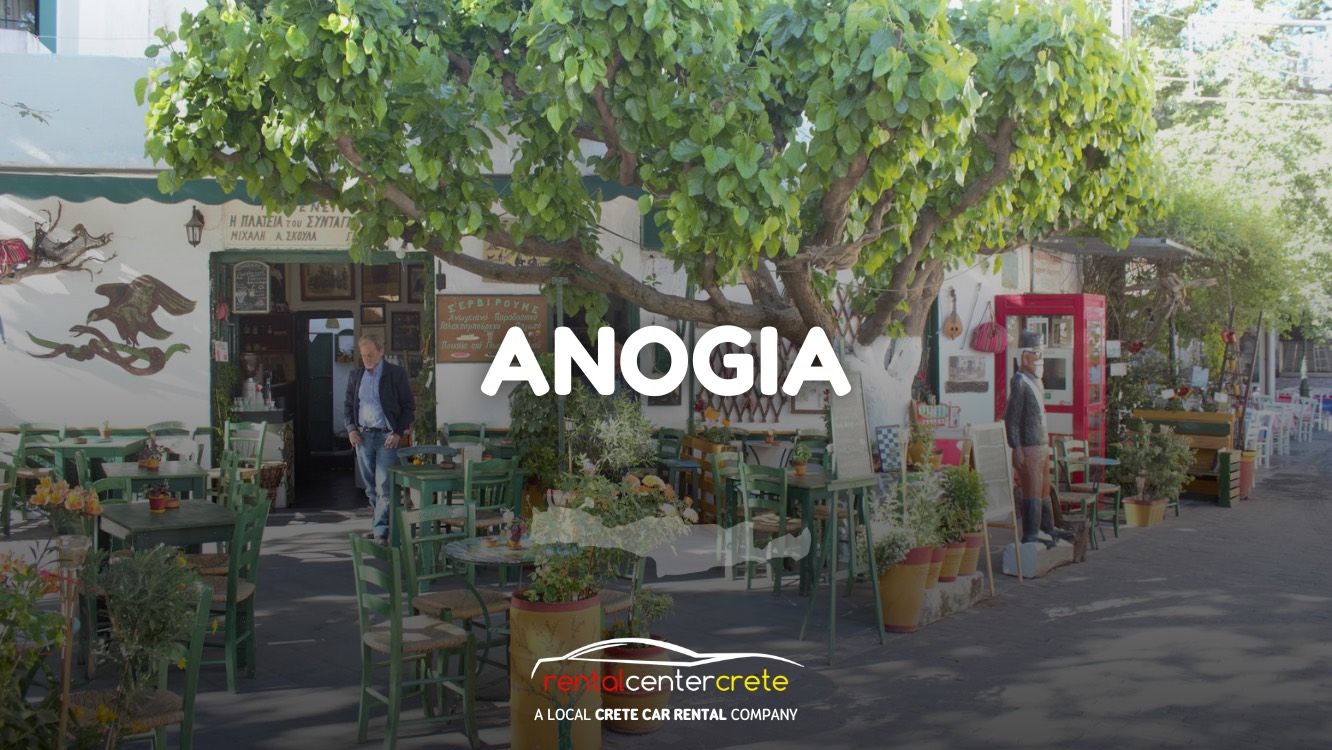
Anogia Village is situated in the centre of the Greek island of Crete. Anogia Village is situated on the slopes of Mount Psiloritis, Crete’s highest peak. It is located at around 750 metres (2,460 feet) and provides stunning views of the surrounding hilly terrain and Cretan countryside. It is unknown when and by whom Anogeia was formed. Many people think that the first settlement was started by people from the village of Axos, west of Anogia, where the Minoan city of Oaxos was.
Anogia Village is a lovely and traditional Cretan village that has managed to retain its own cultural history. The community is well-known for its rich history, classic architecture and welcoming atmosphere. Anogia’s winding alleyways are lined with stone homes, charming courtyards and colourful flowers. The community of Anogia Kreta is known for its traditional crafts, especially weaving and pottery.
Anogia Village and Heraklion International Airport “Nikos Kazantzakis” are roughly 53 kilometres (33 miles) apart. The drive from the airport to Anogia takes about an hour, based on traffic and road conditions. The trip usually entails driving through gorgeous rural roads and up into the highlands.
There are many ways to go to Anogia Village. Renting a vehicle is often the most cost-effective and convenient option since it lets visitors explore the surrounding locations at their own speed. A taxi, bus or other kind of public transit are options. Buses from Heraklion to Anogia are available, although the frequency is limited, so check the timetables beforehand.
Anogia Village has several notable sites to visit. The Skinakas Observatory, located on Mount Skinakas in Anogia, is one of them. It offers a one-of-a-kind chance for stargazing and seeing celestial objects. The Nida Plateau, situated near Anogia, is another renowned tourist site. The magnificent plateau provides breathtaking views, hiking paths and the opportunity to appreciate the region’s natural beauty. Another site is Agios Georgios Square, a popular meeting place in Anogia, surrounded by traditional cafés, taverns and the historic Agios Georgios church. It’s a terrific location to unwind, enjoy the ambience and sample Cretan food.
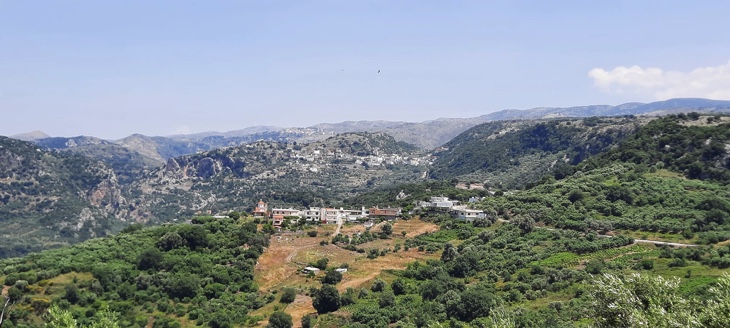
Where is Anogia Village in Crete Located?
Anogia Village or Anogeia, is a notable Crete landmark on the Greek island of Crete. Anogia Village lies in the prefecture of Rethymno, the island’s northern area. It is nestled on the slopes of Mount Psiloritis, Crete’s most elevated mountain. The village is called “Anogia”, and the island of Crete, where it is located, is also called “Kreta”. Anogia’s latitude and longitude are around 35.2807° N and 24.8908° E. It offers incredible views of the surrounding area from around 750 metres (2,460 feet). Anogia Village is a genuinely exceptional Crete Landmark highlighting the island’s beauty and cultural history.
The image below shows the map of Anogia Village.
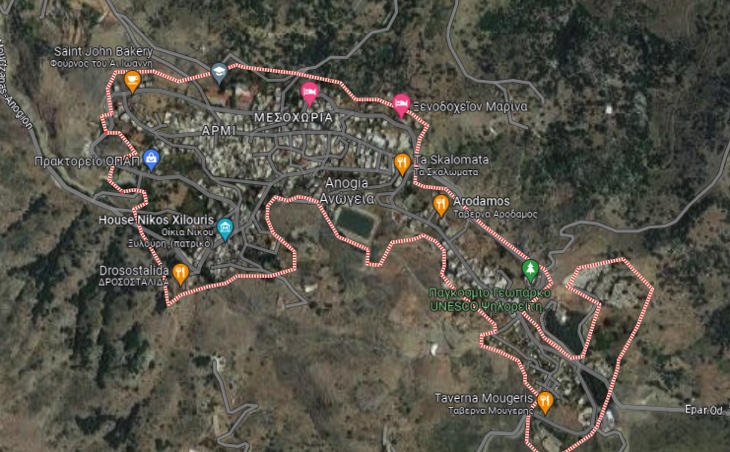
How Can You Describe Anogia Village in Crete?
Anogia Village in Crete is a desirable location that provides a unique fusion of scenic beauty, rich cultural history and historical significance. Anogia Village in Crete is a location that emits a unique character and charm in the Rethymno prefecture in the island’s northern part.
The magnificent slopes of Mount Psiloritis, commonly known as Mount Ida, the highest mountain in Crete, are where the settlement of Anogia is located. The lovely location offers a tranquil ambience and amazing panoramic countryside views. Rugged mountains, lush green valleys and flowing streams make up the scenery, making for a beautiful outdoor exploration and recreation setting.
The rich cultural legacy of Anogia Village is one of its noteworthy features. The community is known for being a stronghold of Cretan traditions and customs. The people who live there, known as the Anogians, have maintained their distinctive way of life, which is strongly connected to their past and the folklore and mythology of the island.
Anogia is especially well-known for its connection to the Cretan rebels, who substantially contributed to the island’s resistance against historical occupiers. The natives have a distinctive traditional outfit that serves as a sign of their identity. They are noted for their staunch independence and rebellious character. The “stivania”, sometimes called the rebel outfit, is a traditional costume worn by men and women. The familiar elements are black boots, a shirt, a vest, a black head cover and pants. Their clothing honours the Anogian people’s illustrious history and tenacity.
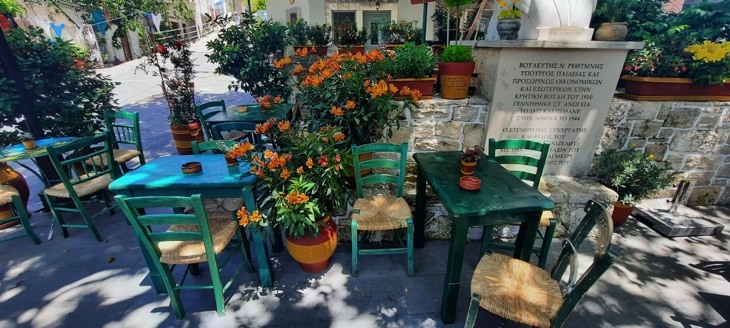
Investigating Anogia Village’s past reveals a compelling tale of tenacity and courage. Numerous difficulties and significant historical occurrences have influenced the village’s character. Anogia has consistently fought against invaders throughout its history, including the Ottoman Empire and the Nazi occupying troops during World War II. The village’s residents have made significant sacrifices and faced great difficulties, but they have never wavered in their commitment to preserving their traditional legacy and land.
Anogia Village remains a tribute to its people’s tenacious spirit and provides tourists with a look into the rich tapestry of Cretan history and culture. Visitors immerse themselves in the genuine Cretan way of life by exploring its quaint local markets, historic stone homes and meandering tiny lanes.
How Far is Anogia Village from the Airport?
The image below shows the distance from Heraklion International Airport to Anogia Village.
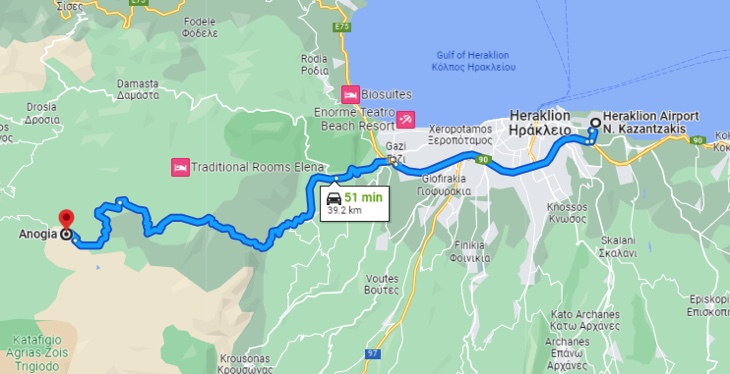
Anogia is located around 39.2 kilometres (24.35 miles) to the southeast of Heraklion International Airport “Nikos Kazantzakis” (HER), which is the closest airport and the main airport for the island of Crete. It is the most accessible airport for visitors to Anogia Village because of its proximity to the island’s capital, Heraklion. Visitors reach Anogia from the airport by taking a pleasant journey through the breathtaking Cretan countryside.
Crete’s beautiful scenery is significantly explored through driving in Crete. Travellers exit the Heraklion International Airport and go south on National Road 90 (Ethniki Odos 90), merging onto the E75 motorway. They travel down the E75 via charming towns and villages towards Anogia Village. The trip usually takes around an hour, depending on traffic and road conditions.
The rocky mountains, verdant valleys and picturesque landscapes that adorn the island of Crete are seen by travellers as they tour. Awe-inspiring scenery along the way to Anogia enables visitors to fully appreciate the area’s stunning natural surroundings .
How to Go to Anogia Village in Crete?
There are several options to get to Anogia Village in Crete from the airport, including a car, bus and taxi. Renting a car from the airport to Anogia Village gives flexibility and convenience. Several car rental companies are available within the airport terminal. A variety of cars are available from companies, such as Rental Center Crete and others, to meet a variety of purposes and price ranges. Renting a vehicle allows tourists to explore the lovely countryside and make pit breaks while taking the enchanting journey at their own speed.
Taking a bus to Anogia Village from the airport is an additional alternative. Frequent bus routes connect Heraklion and Anogia. The KTEL bus service is a trustworthy and cost-effective choice. Enquire about the precise timetable and buy tickets at the bus station close to the airport. Remember that bus timetables change, so it’s best to check the most recent timetables beforehand.
Plenty of taxis at the airport make it easy and pleasant to go to Anogia Village. The terminal building’s exterior has taxi ranks. The use of authorised taxis equipped with metres is advised to guarantee fair pricing. The drive from the airport to Anogia Village typically takes around an hour, depending on traffic and road conditions.
The airport has several rental car agencies where tourists are allowed to choose a suitable vehicle if they want to rent a car. Rental Center Crete, a reliable automobile rental company situated on airport property, is one such choice. Pick the vehicle that best meets the requirements from Rental Centre Crete’s wide range of vehicles, which range from small cars to roomy SUVs. They provide low pricing, extensive insurance choices and helpful customer service, guaranteeing an easy and trouble-free vehicle rental experience.
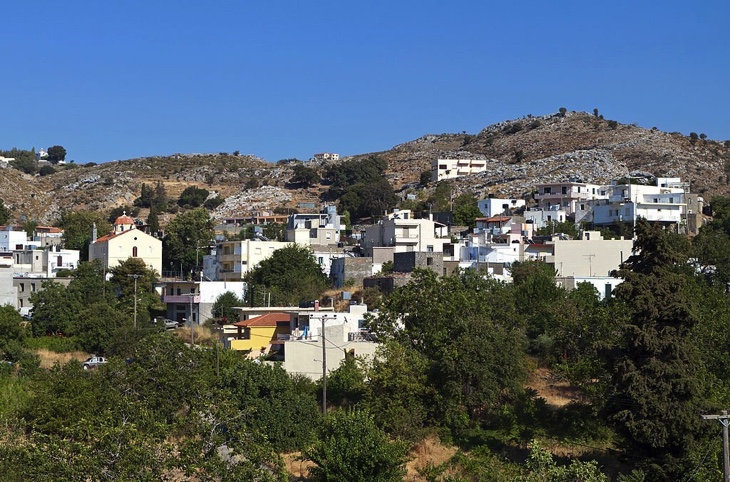
1. By Car
“By car” refers to utilising a personal or hired car to visit the Crete Village of Anogia. “By car” provides the flexibility to set the schedule and explore the outlying areas at their own leisure. Choosing a car as a method of transportation allows people to take advantage of scenic roads and stop anywhere they like along the trip to take in the stunning scenery or see any sites that capture their attention.
The time it takes to drive to Anogia village depends on several variables, including the distance from the starting place, the state of the roads and the amount of traffic. The trip often takes between one and two hours. Heraklion’s tortuous mountain roads lead to Anogia via car. Start from Heraklion on the New National Road to Rethymno and Chania. Next, travel the Old National Road to “Gazi” and “Anogia”. Signs pointing towards Anogia are on the left after travelling for around 4 kilometres. The picturesque journey to Anogia’s start is 22.8 km.
There are numerous costs associated with driving to Anogia village. The cost of renting a car, gasoline expenses, toll fees and parking fees are some examples of these. The cost of renting a car changes based on the kind of vehicle, the rental agency and how long the rental is. The distance travelled and the current gasoline price affects fuel expenses. It is essential to take these costs into account when making travel plans.
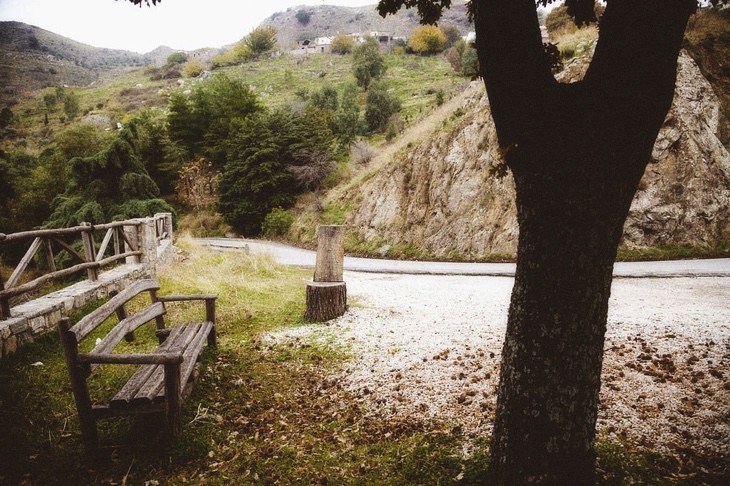
A considerable degree of flexibility and convenience is offered while commuting to Anogia village by car. Choosing the time and path of departure enable people to personalise their travel to suit their tastes. Visitors stop to see other things or take breaks as needed. Having a vehicle makes storing and transferring stuff easier and provides a relaxing and private way of transportation.
It’s crucial to Choose the Right Car to Rent if someone wants to get the most out of the trip to Anogia village. Consider details like the number of people, baggage space and the kind of routes. Select a reliable, fuel-efficient vehicle. Check the rental terms and conditions, insurance coverage and any extra costs before finishing the booking. People make sure their journey to Anogia village is easy and pleasurable by considering these things and choosing a suitable automobile.
2. By Bus
“By bus” refers to a form of transportation that uses buses to go to the Cretan village of Anogia. Buses are a popular and widely utilised mode of transportation in Crete, used by residents and tourists. They provide a practical and inexpensive means to go to many locations on the island, such as Anogia Village.
The starting location and the precise bus route determine how long it takes to go by bus to Anogia Village. The length of a bus ride often depends on several variables, including the amount of traffic, the distance to be travelled and any stops along the route. Head to the Chanioporta bus station to get a bus from Iraklion to Anogia. The green bus to Anogia leaves many times each day from there. The travel takes around an hour and costs roughly €2.90. Take the blue bus from the airport to Chanioporta. Buy the ticket before getting on the bus. The bus station for Anogia is around 50 metres away from Chanioporta.
The bus to Anogia Village is often a less expensive option. Bus fares in Crete are quite low compared to other types of transportation. The exact cost varies according to the route’s particular bus operator and the distance covered. Verifying the current fare prices and any discounts offered before taking a trip is wise.
The convenience of bus travel to Anogia Village is another factor to consider. Buses in Crete typically have well-established routes and timetables, making it simple to plan the trip ahead of time. They often provide consistent daily services, enabling patrons to choose an appropriate departure time. Bus stations are often placed in accessible locations across numerous cities and villages, making visiting many locations, like Anogia Village, simple. Remember that bus volumes rise during busy travel times or on holidays and there are delays, so it’s best to make travel arrangements in advance.
3. By Taxi
“By taxi” refers to using a taxi to get to the destination when referring to a form of transportation to the Anogia Village in Crete. Taxis are often accessible in metropolitan and tourist regions, providing a simple route to the hamlet of Anogia. Taxis often have metres that determine the charge depending on the time and distance travelled, guaranteeing a fair pricing structure.
The travel time varies based on the starting place and traffic conditions to Anogia village. Taxis are a fast mode of transportation, mainly when departing from adjacent towns and cities. Taxis are widely accessible in Heraklion and the fare from the airport is about €45. The trip usually takes around 45 minutes. Taxi drivers must provide a receipt.
The cost of taking a cab to Anogia village varies depending on the route, how long it takes and any extra fees levied by the local government. Taxis usually charge a base cost that covers the whole journey plus an extra fee for each additional km or mile. Check the price before starting the trip with the taxi driver to avoid any shocks. Taxis provide a quick and pleasant travel experience, even if they are more costly than other forms of transportation.
There are various benefits to taking a cab to Anogia village. Taxis pick up and drop off passengers at Anogia village. There is no longer a need to handle crowded public transit or travel great distances while carrying a lot of stuff. Choose the departure time and tailor the travel arrangements to suit the requirements of taxis, which adds to their flexibility. Taxi drivers enhance the whole trip experience since they are often knowledgeable about the neighbourhood and provide suggestions or details about Anogia village.
Where Can You Stay in Anogia Village Crete?
Listed below are the places where people can stay in Anogia Village Crete.
- Marina Hotel: Marina Hotel in Anogia is an excellent option for couples looking for a romantic holiday. The hotel has modern guest rooms with a flat-screen TV, air conditioning and complimentary Wi-Fi. There is an on-site restaurant for convenience. Guests staying in Anogia have easy access to local Mediterranean eateries and sites, including the famous Cave of Zeus. The hotel’s position lets visitors experience the finest Anogia while resting and unwinding. A regular room at the Marina Hotel costs between €40 and €51 per night, making it an economical alternative for a romantic getaway.
- Delina Mountain Resort: Delina Mountain Resort is a magnificent hotel situated around 1 kilometre from Anogia town in Crete, near Nida, at an elevation of 910m. The expansive 28-acre resort offers a distinct combination of modern facilities and services while upholding authentic Cretan tradition and the island’s natural beauty. The 13 large, well-furnished apartments at Delina Mountain Resort provide visitors with a high-quality stay. It is often recognised as one of the six lodging options in Anogia that offer the most incredible value. Standard rooms typically cost between €58 and €139, giving guests a variety of reasonable alternatives. Its proximity to Anogia village offers convenient access to the area’s attractions and a tranquil environment among nature.
- Melissa Apartments: Melissa Apartments in Anogia Village are among the best value housing choices. It has rooms with balconies and a beautiful mountain view. Guests enjoy a patio and free private parking at the hotel. It is well located, about 36 kilometres from Heraklion Archaeological Museum and 35 kilometres from Venetian Walls. A basic room at Melissa Apartments costs between €51 and €65 on average. It is around 17 miles from N. Kazantzakis Airport and 45 miles from Souda Airport, making it easily accessible to travellers. Rental cars are available for visitors who want to explore the region.
- Perachori Boutique Studio: Perachori Boutique Studios is a collection of three one-of-a-kind apartments in Perachori’s plaza in the picturesque town of Anogia. These apartments have a unique and distinct décor that creates a lovely visitor experience. Each flat has a smart TV with Netflix for movie viewing and YouTube for music streaming. The convenient location lets visitors enjoy coffee and meals at nearby traditional coffee shops and tavernas. Perachori Boutique Studios give travellers simple access, with N. Kazantzakis Airport roughly 17 miles away and Souda Airport approximately 45 miles away. There are car rental services in the neighbourhood. A regular room typically costs between €80 and €90 per night.
- Hotel Aristea: Hotel Aristea in Anogia village is a highly recommended alternative for couples looking for a romantic holiday. The hotel offers a variety of facilities to improve the stay, including rooms with kitchenettes and refrigerators, andcomplimentary Wi-Fi for visitors’ convenience. Aetos Taverna, noted for its superb BBQ, is close to eating options. Hotel Aristea provides excellent value for money, with regular rooms costing an average of €62 to €147 per night. The hotel is just 17 miles from N. Kazantzakis Airport and 45 miles from Souda Airport, making it conveniently accessible for travellers. Car rental services allow guests to explore the surrounding area further.
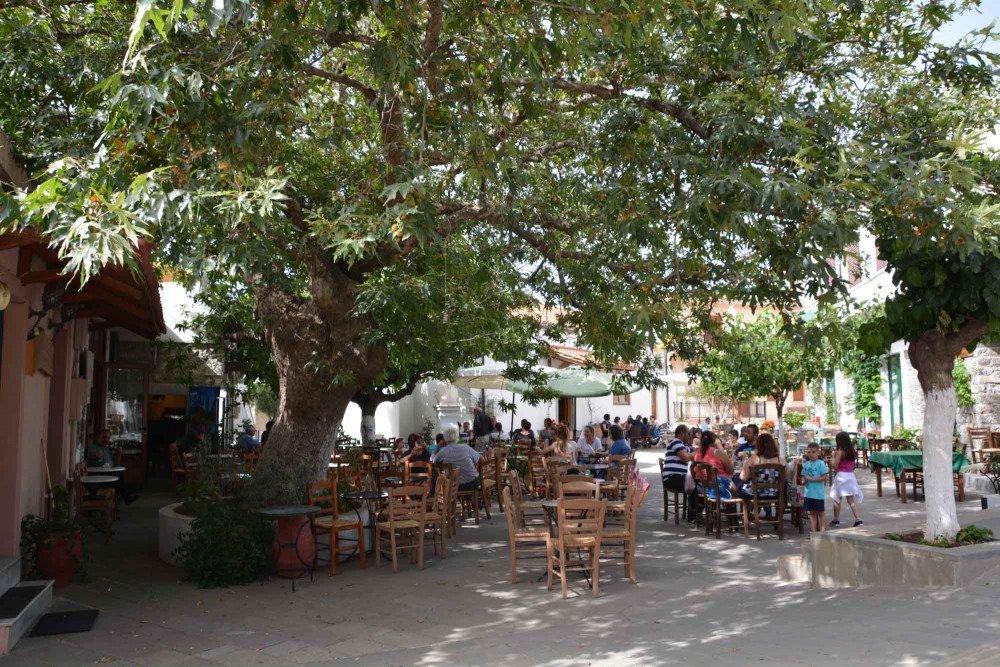
Where Can You Eat in Anogia Village Crete?
Listed below are the places where people can eat in Agonia Village Crete.
- Ta Skalomata: The popular dining establishment Ta Skalomata is in Anogia, Crete. It is the village’s third-best restaurant out of eight. It is open from 12:00 a.m. until 11:59 p.m., giving customers ample time for lunch and supper. Greek, Mediterranean and barbecue food are highlighted on the extensive menu of Ta Skalomata. A variety of tasty foods are available to guests all day. Meals at Ta Skalomata are generally priced between €8 and €14, making it a reasonably priced choice. Visitors to Anogia savour the gastronomic pleasures of the restaurant at any time of day, immersing themselves in the regional flavours and specialities.
- Arodamos: The best eatery in Anogia village is called Arodamos, serving both Greek and grilled food. Arodamos offers reasonable eating alternatives, with prices ranging from €10 to €20. The eatery accommodates a variety of dietary requirements, including gluten-free, vegan and vegetarian selections. Arodamos provides service all day long by providing breakfast, lunch, supper, brunch and late-night meals. Highchairs for families are among the facilities offered by the restaurant, along with parking options, including validated and on-street parking. A comfortable and delightful meal experience is guaranteed by the restaurant’s table service and acceptance of credit cards. The hours of operation for the Arodamos restaurant in Anogia village are as follows; It is open on Sundays from 10:00 a.m. until 6:00 p.m. It opens at 9:00 a.m. and closes at 5:00 p.m. on Mondays. It is open from 10:00 a.m. to 6:00 p.m. on Tuesdays to Fridays. Arodamos has longer hours on Saturdays, operating from 10:00 a.m. until 9:00 p.m.
- Delina Restaurant: The famed Delina Restaurant in the hamlet of Anogia, Crete, is renowned for its traditional flavours and Cretan cuisine. The restaurant is open from 10:00 a.m. to 12:00 a.m. and is located on Anogia Street. It serves a variety of meals all day. Mediterranean, Greek and barbecue cuisines are Delina’s specialities. Flavorful meals are made using their gardens, wild herbs from the Psiloriti mountain and organic food. Delina offers a wide selection of foods for breakfast, lunch, supper and late-night eating and is rated as Anogia’s second-best barbecue restaurant and fifth-best overall restaurant. The pricing range of Delina Restaurant ranges from €3 to €30, catering to various spending limits and tastes.
- Traditional Cafe Michalos: The second-best restaurant in the neighbourhood is Traditional Cafe Michalos, which is a well-known business located in Anogia, Crete. The café is open from 12:00 a.m. to 11:59 p.m., giving customers a long window of opportunity to take advantage of all it offers. The café, which strongly emphasises tradition, provides
- Taverna Gagaris: Taverna Gagaris is placed fourth out of eight eateries in the Cretan village of Anogia. Located at Epar.Od. Tylisos – Anogion 129, Anogia, it specialises in Greek cuisine. The restaurant offers seating and table service, allowing guests to enjoy their meals comfortably. Taverna Gagaris offers guests in Anogia village a chance to sample Greek food in a homely atmosphere.
What are the Things to See in Anogia Village Crete?
Anogia village or Anogia Kreta in Crete, has several fascinating attractions for tourists to see. Agios Georgios Square, the Folk Art Museum, the Ancient Zominthos, Yakinthia, the Museum Grillios, the Skinakas Observatory, the Ideon Cave, the Nida Plateau, the Zoniana Wax Museum and the Sfendoni Cave are a few of the major attractions. These attractions highlight the region’s historical importance, stunning natural surroundings and rich cultural legacy.
Tours of Anogia and its surrounding sights are often provided. Key locations like the Folk Art Museum, where visitors immerse themselves in the regional arts and crafts traditions, are visited on these tours. Anogia’s central meeting spot, Agios Georgios Square, is well-known for its lively ambience and customary events. Ancient Zominthos provides an insight into the region’s archaeological past, while Yakinthia is a cultural event honouring the shepherding customs of the area. The Museum Grillios offers information on the culture and history of the area.
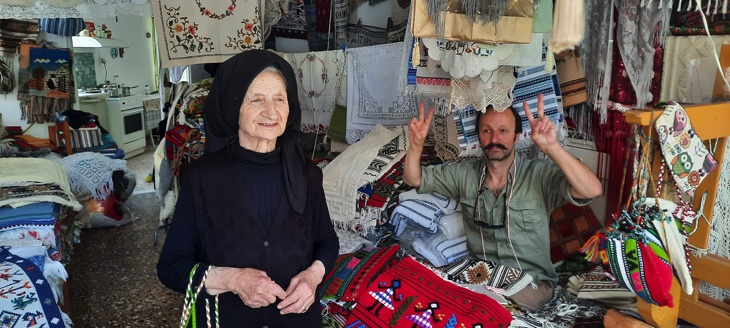
Visits to the Skinakas Observatory, where guests are take advantage of stargazing possibilities and educational programmes, are often included in tours of Anogia, Crete. Another well-known site is the Ideon Cave, a well-known archaeological site that is said to be the location of Zeus’ birth in Greek mythology. It is situated on the neighbouring Ideon Andron mountain. The picturesque Nida Plateau is often included in trips since it offers breathtaking vistas, possibilities for trekking and a chance to be close to nature. Visitors tour the Wax Museum in the nearby town of Zoniana, which showcases realistic wax sculptures of historical and cultural luminaries and the fascinating Sfendoni Cave, renowned for its magnificent stalactite and stalagmite formations.
Check with local tour operators or travel agencies for tour packages that include Anogia and its surrounding attractions when planning a trip to Crete’s Anogia and its surroundings. These excursions provide a thorough and educational experience, enabling guests to learn about the importance and beauty of Anogia and its surroundings in a planned and guided way.
1. Folk Art Museum (Museum Grillios)
The Folk Art Museum is a cultural institution that preserves and promotes traditional arts and crafts from a specific area or group. Various artefacts, including textiles, ceramics, woodwork, metalwork and traditional dress, provide insights into the creative traditions and cultural practices of the place being represented.
The museum is also called Museum Grillios. It is a museum in the village of Anogia, Crete. It is a cultural institution that highlights the region’s history and traditional way of life. Visitors visit the museum to see and learn about the Anogia community’s rituals, crafts and everyday life over the years. It features numerous exhibitions and displays depicting local customs, clothes, tools and artefacts. The museum’s mission is to conserve and showcase the village’s cultural legacy, making it an essential destination for anyone interested in local traditions and customs.
Museum Grillios displays Alkiviadis Skoulas’ (“Grillios”) original wood carvings and paintings. Observe and appreciate the wood carvings and paintings on display, getting insight into Skoulas’ creative style and workmanship.
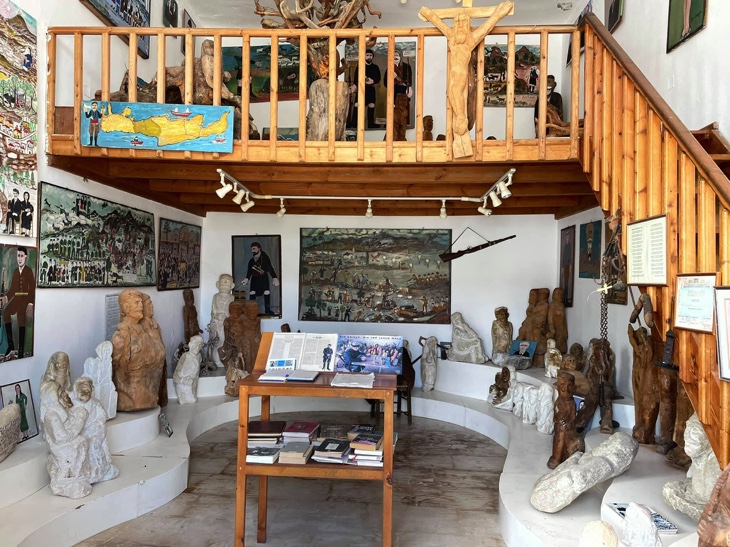
The museum educates tourists about regional traditional arts and crafts by acting as a centre for cultural knowledge. Its objective is to conserve the cultural character of the neighbourhood by showcasing and honouring the artistic expressions handed down through the centuries. Visitors appreciate the exhibits’ visual appeal and cultural significance.
The Folk Art Museum provides visitors with various activities, such as seeing the exhibitions, learning about the history of each piece of art and taking part in workshops or demonstrations to learn traditional craft techniques under the supervision of experienced artists.
A wide variety of folk art objects, including handwoven textiles, pottery, sculptures, jewellery, musical instruments and traditional costumes, are shown at the museum. Every exhibition offers a different window into the artistic and cultural heritage of the neighbourhood.
Visitors take taxis or local buses linking the museum area to the Folk Art Museum in Rethymnon, Greece. Renting a car allows flexibility and the freedom to explore the region at one’s own speed while using navigational aids and road signs. It is advised to check the museum’s operating times and parking possibilities.
The distance between the town of Anogia and the Folk Art Museum in Rethymnon, Greece, changes based on the exact locations and routes selected. Rethymnon and Anogia are located around 40 kilometres (25 miles) apart.
2. Agios Georgios Square
Agios Georgios Square is a central square located in the town of Anogia, Crete. Agios Georgios Square acts as a hub for both residents and tourists, providing a bustling and exciting environment. Agios Georgios or Saint George, is the plaza’s name, which is historically and culturally significant to the neighbourhood.
The major area of Anogia, Agios Georgios, acts as a hub for festivities, events and social gatherings. It is a centre of activity where people get a taste of the local way of life and a sense of community. The plaza offers a beautiful environment to unwind and take in Anogia’s everyday life due to its historic architecture, modest cafés and stores.
There are various things people do at Agios Georgios Square. The cafés and eateries around the area provide Greek coffee and regional specialities. Discover unusual souvenirs, regional goods and traditional crafts by perusing the stores. Traditional events and festivals are held in the plaza, where people experience Cretan music, dancing and cultural performances.
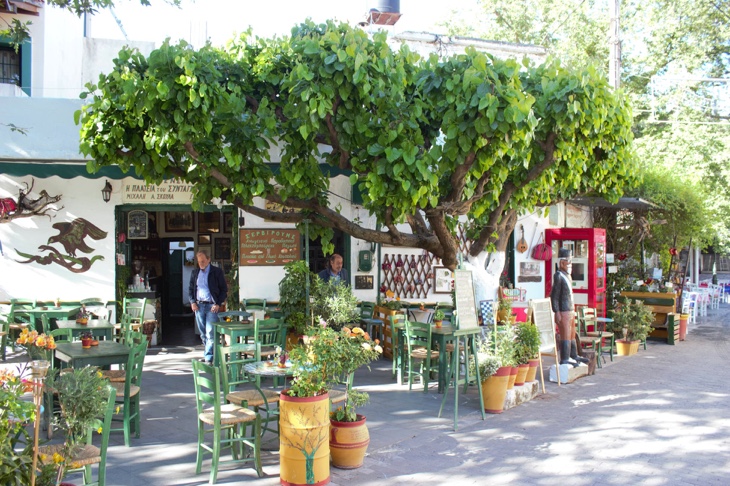
There are several sites to view in Agios Georgios Square. Admire the stunning Agios Georgios church, which often serves as the plaza’s focal point. Observe the incredible architecture of the nearby structures, which has a classic Cretan style. Get lost in the bustling atmosphere while watching the locals go about their everyday lives.
Walking to Agios Georgios Square from Anogia is easy. The area is well-situated and accessible on foot from a variety of lodgings. Driving to Anogia and parking nearby are options for hiring a vehicle. Renting a vehicle allows people to explore nearby sights and cities.
The village of Anogia is not too far from Agios Georgios Square. It is located within the town limits and serves as Anogia’s central plaza, making it simple for people to go there on foot from anywhere in the region. The distance varies based on the starting place inside the town, but it usually ranges from a few hundred metres to a km.
3. Ancient Zominthos
Ancient Zominthos is an archaeological site on Crete near Anogia. The Late Minoan era is represented by the archaeological site of Ancient Zominthos in Crete. It was a Minoan city that stood between 1600 and 1450 BC. A complex of structures and buildings found during excavations provides essential insights into Minoan culture.
Tour the excavated remains and discover more about Minoan culture and architecture when visiting Ancient Zominthos. Visitors wander among the settlement’s remnants, study the design of the structures and get a feel for how the prehistoric occupants lived. The facility offers guided tours and educational events to help visitors have a better knowledge of the Minoan civilisation.
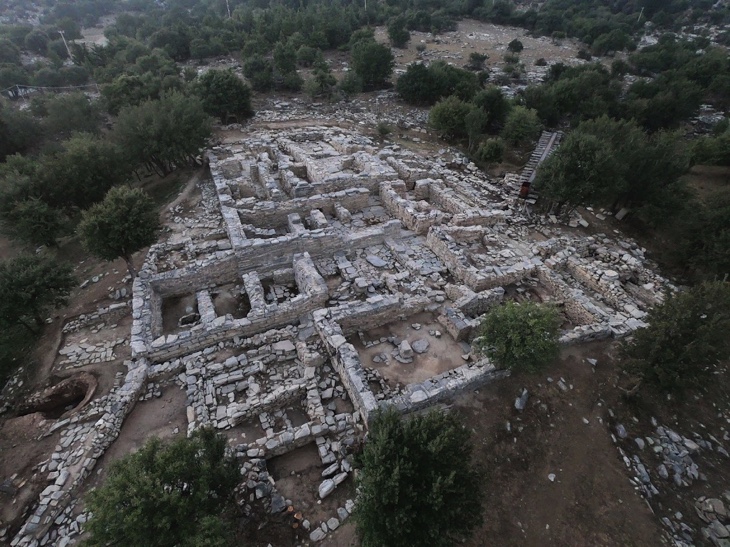
Visitors see the ruins of the Minoan village at Ancient Zominthos, which include residential buildings, workshops, storage facilities and religious structures. The centre courtyard, water management techniques and the buildings’ exquisite construction are notable characteristics. The location provides a unique historical experience by offering an insight into the customs and everyday lives of the Minoans.
Renting a car to drive from Anogia village to Ancient Zominthos gives flexibility and liberty in travel. It is a simple and accessible day tour from Anogia since Ancient Zominthos is just 5 km (3.1 miles) away and reached in only 10 minutes by vehicle.
4. Yakinthia
Yakinthia is a cultural event held in the hamlet of Anogia, Crete. It honours local shepherd customs and highlights the region’s rich cultural history. The yearly festival features a variety of events such as music, dance performances, traditional costume exhibits and gourmet experiences centred on Cretan cuisine.
Visitors to Anogia are allowed to engage in and enjoy various events during the Yakinthia festival. Attending live music performances showcasing traditional Cretan instruments, seeing enthralling folk dances performed in colourful traditional costumes, savouring delectable Cretan foods and delicacies and discovering local artisan crafts and goods are just a few available activities. Visitors participate in the festive mood and interact with the local population to better understand Cretan traditions and customs.
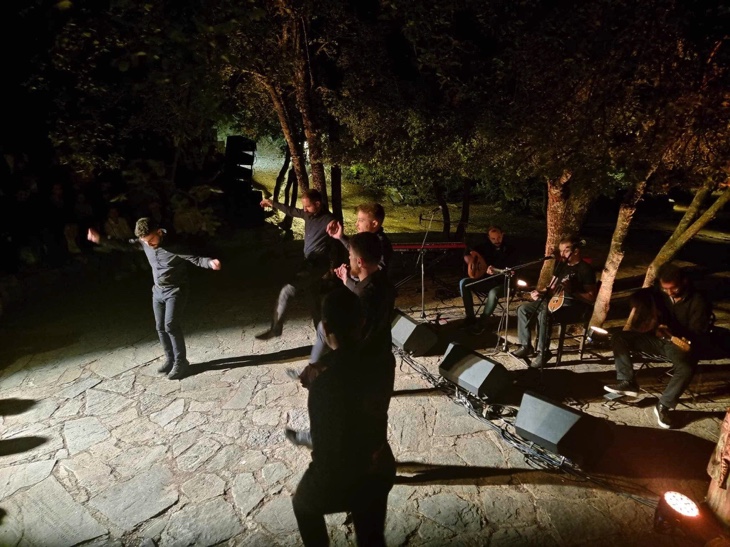
There are various sites and things to see in Yakinthia, Anogia. The village’s classic stone homes and winding alleyways make it a wonderful place to visit. Agios Georgios Plaza, Anogia’s primary plaza, becomes the focal point of cultural events during the festival. Visiting the Folk Art Museum lets visitors learn more about the local art and craft traditions. The natural beauty of the adjacent Psiloritis mountain range allows for trekking and magnificent scenery.
Yakinthia, in Anogia, is accessible using a variety of modes of transportation. Consider getting a vehicle from a local car rental company. Yakinthia is celebrated in Anogia village. Yakinthia is just a short drive from Anogia, enabling festival-goers to easily engage in the celebrations and discover the event’s cultural attractions.
5. Skinakas Observatory
Skinakas Observatory is a scientific observatory on Mount Skinakas in Crete, Greece. The Foundation for Research and Technology runs it, Hellas and the University of Crete. The observatory is located at an elevation of 1,750 metres, giving a clear and dark sky for astronomical studies.
The main objectives of the Skinakas Observatory are astronomical research and observations. It presents a rare chance for astronomers and scientists to use cutting-edge telescopes and equipment to explore celestial objects and phenomena. Various scientific activities are available to visitors, including observing galaxies, stars, planets and other cosmic phenomena.
There are numerous activities available while visiting Skinakas Observatory. Guided tours are provided by qualified astronomers who explain the observatory’s infrastructure, equipment and current research. The opportunity to utilise the telescopes for stargazing and discovering the beauties of the night sky arises. The observatory sometimes hosts unique astronomy- and astrophysics-related lectures, activities and workshops.
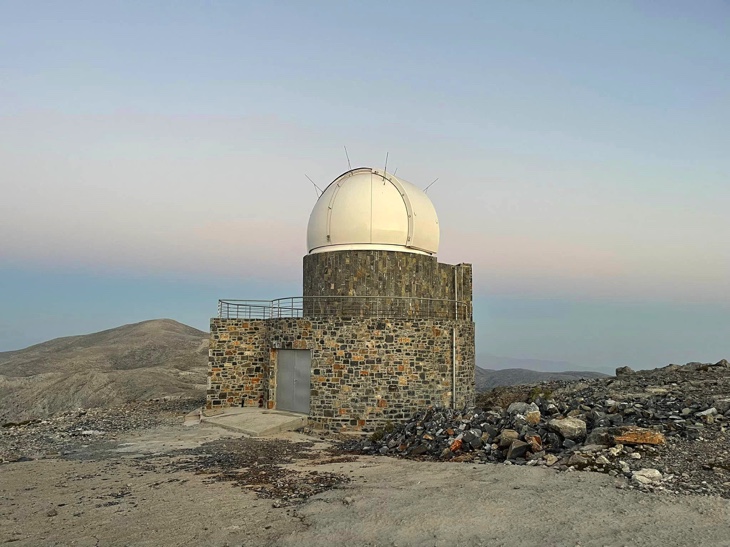
Skinakas Observatory provides stunning views of the night sky away from the light pollution common in cities. Beautiful celestial phenomena, such as stars, planets, star clusters, nebulae and even far-off galaxies, are seen by visitors. The observatory’s high altitude and clear skies make it a perfect place to observe and take in the wonders of the cosmos.
Renting a vehicle is one way to get to Skinakas Observatory on Mount Skinakas. The route going to the hamlet of Ano Moulia is taken from the town of Anogia, the nearest populated place to the observatory and then continues in that direction to get to the observatory. The journey covers a distance of around 15 kilometres in about 30 minutes. Renting a vehicle gives visitors the freedom and convenience to explore the region.
Anogia and Skinakas Observatory are separated by around 15 km of land. The observatory is located above Mount Skinakas, overlooking the town. The distance travelled by automobile is roughly 30 minutes on the road. The path winds through gorgeous vistas and provides views of the stunning Cretan countryside.
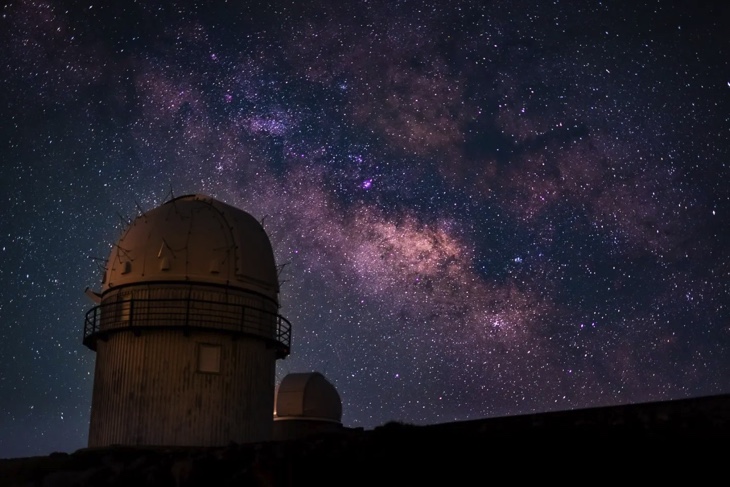
6. Ideon Cave
Ideon Cave or Ideon Andron, is a historically and mythologically important location on the Greek island of Crete. Ideon Cave is located on Mount Ida, the highest mountain in Crete and according to Greek mythology, it is a heavenly site. The story goes that Zeus, the king of the gods, was raised and cared for in Ideon cave.
Ideon Cave is a well-liked tourist site for visitors who like history because it has significant cultural and historical value. Explore the cave and discover the mystery of the historic location. Stalactites and stalagmites within the cave give it a distinct and interesting ambience.
There are many things to do and locations to discover when touring Ideon Cave. One of the primary activities is to go on a guided tour of the cave to learn about its mythology and history. Hiking and nature treks nearby are available, with spectacular views of the Cretan environment.
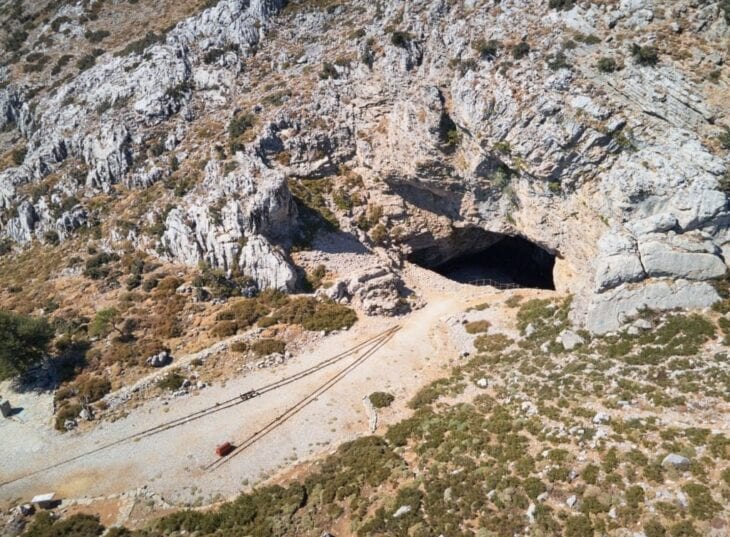
Ideon Cave’s interior is stunning. The structures that the stalactites and stalagmites produce are breathtaking, contributing to the mysticism of the cave. The cave is a fascinating location for anyone interested in Greek mythology since it is said to be the birthplace of Zeus, which gives it historical value.
The village of Anogia is a suitable starting point to reach Ideon Cave. The distance between the cave and Anogia, situated in the centre of Crete, is around 23 kilometres (14 miles). Renting a vehicle is the most popular method to go from Anogia to Ideon Cave. The road to the cave is well-marked and readily accessible, allowing visitors to experience a scenic journey through the Cretan mountains.
7. Nida Plateau
The Nida Plateau is a highland in the White Mountains of Crete, Greece. The Nida Plateau provides breathtaking natural beauty and is a well-liked location for hikers and nature lovers since it is located at a height of around 1,400 metres. The plateau is distinguished by its rocky topography, beautiful scenery and diverse flora and wildlife.
Crete’s Nida Plateau is a magnificent natural landmark. It is a broad, open area encircled by towering mountain peaks, notably Mount Psiloritis, the island’s highest point. Hiking, trekking and exploring the many trails that wind through the region are just a few of the outdoor activities that visitors partake in. The plateau is a beautiful location for camping and taking in the calm surroundings.
Do several things to maximise one’s visit to the Nida Plateau. The first option is to walk up Mount Psiloritis, which provides stunning 360-degree views of the surroundings. The distinctive flora and fauna of the Plateau, including uncommon plant species and mammals, are available for exploration. Another activity is a picnic or leisurely walk among the picturesque meadows and limestone formations.
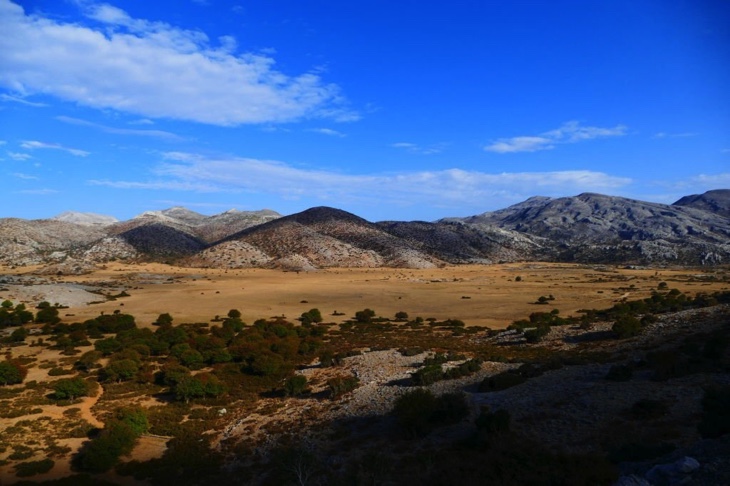
Anogia, the nearest populated area, is an excellent place to start the journey to the Nida Plateau. Renting a vehicle is the easiest method to get to the plateau. Reach the plateau by following the well-designated route from Anogia. The drive offers breathtaking scenery and having a vehicle gives one the freedom to explore the surrounding area.
The village of Anogia is situated around 10 kilometres away from the Nida Plateau. The drive takes around 20-30 minutes, depending on road conditions and traffic. The route is comparatively straightforward and a scenic drive accompanies the ascent to the plateau.
8. Potamianos Wax Museum in Zoniana
The Wax Museum in Zoniana is a museum in the village of Zoniana, Crete, Greece. The Wax Museum in Zoniana includes a variety of wax sculptures depicting different historical and cultural icons. The museum wants to provide visitors with an engaging, educational experience by using realistic wax figures to teach them about significant people and events.
Explore the exhibits and appreciate the workmanship of the wax figures at the Zoniana Wax Museum. The museum provides a chance to explore history and learn about various periods and civilisations. Engage with the exhibits, take pictures and read detailed explanations to learn more about the importance of each figure.
There are several wax figurines depicting famous people from various eras at the wax museum in Zoniana. Anticipate seeing historical characters, including eminent leaders, artists, cultural icons and classical Greek philosophers. Each figurine is painstakingly created to replicate its real-life counterpart, giving visitors a realistic and captivating experience.

Consider hiring a vehicle from surrounding towns or cities to get to the wax museum in Zoniana. Zoniana is in the mountains of Crete, which makes it hard to get there by public transport. Renting a car provides flexibility and enables one to appreciate the gorgeous journey through the Cretan countryside. Make plans for transportation by calling local car rental companies or booking a car online.
There are around 10 kilometres (6.2 miles) between the Zoniana Wax Museum and the village of Anogia. It is handy for guests staying in Anogia to visit the museum since the two venues are not too far apart. The travel by vehicle takes around 20 minutes, depending on road conditions. The scenic journey provides magnificent views of the Cretan landscape and the surrounding mountains.
9. Sfendoni Cave in Zoniana
Sfendoni Cave is a natural marvel situated near the hamlet of Zoniana on the Greek island of Crete. Sfendoni Cave is well known for its magnificent stalagmite and stalactite formations, which have developed gradually over many years. Explore and take in the unique geological formations in a magnificent environment thanks to the cave’s interior’s exquisite lighting.
The well-liked tourist destination Sfendoni Cave in Zoniana provides guests an exceptional and unforgettable experience. Take guided excursions within the cave that provide intriguing details about its geological past and the production of stalactites and stalagmites. The outstanding acoustics of the cave make it a perfect venue for musical performances and other cultural activities, which adds to its allure.
Engage in several activities when visiting Sfendoni Cave in Zoniana. The highlight is a guided tour, where knowledgeable guides direct visitors through the cave and provide fascinating information about its formation and history. Explore the nearby natural surroundings, which provide hiking paths and picturesque vistas and take amazing pictures of the formations’ spectacular scenery.
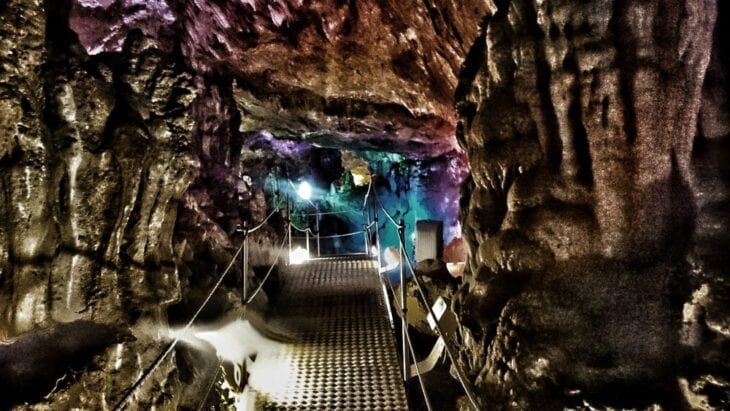
There is plenty to see and wonder at in Sfendoni Cave. Beautiful stalactite and stalagmite formations of all sizes, shapes and colours are seen throughout the cave. The “Tower of Pisa” and the “Curtains”, two prominent structures, are especially striking. Experience a mesmerising sight in the cave’s well-preserved interior with its unique formations and alien atmosphere.
Renting a vehicle is the most practical method to go to Sfendoni Cave in Zoniana. Hire a vehicle from nearby rental firms in Crete’s main towns and cities, such as Heraklion or Rethymno. It takes about an hour to go from these villages to Zoniana and the road is well-signposted. Public transit or a taxi are other options, but hiring a vehicle gives one more freedom and convenience when exploring the neighbourhood.
Sfendoni Cave near Zoniana and the village of Anogia are separated by around 6 kilometres (3.7 miles). The trip from Anogia to the cave by automobile only takes around ten minutes due to the small distance involved. The trek to the cave is enjoyable because of the scenic route, which provides beautiful views of the Cretan landscape.
How is the Weather in Anogia Village Crete?
The weather in Anogia Village, Crete, is a Mediterranean climate, which is typical of the area. It implies that the community gets warm winters and scorching, dry summers. The weather is usually lovely all year, with a lot of warmth and not too much rain.
The village’s high elevation impacts the weather in Anogia since it is located on the slopes of Mount Psiloritis. Its height leads to significantly lower temperatures when compared to Crete’s coastal regions. Typical summertime temperatures in Anogia range from 77 to 95 degrees Fahrenheit or 25 to 35 degrees Celsius. Cool mountain winds provide relief from the village’s oppressive summer heat.
Temperatures throughout the winter months in Anogia often range from 10 to 15 degrees Celsius or 50 to 59 degrees Fahrenheit. Snowfall is quite seldom in the settlement, compared to the nearby mountains, where it is prevalent. Cooler temperatures and occasional rain are to be anticipated throughout the winter months.
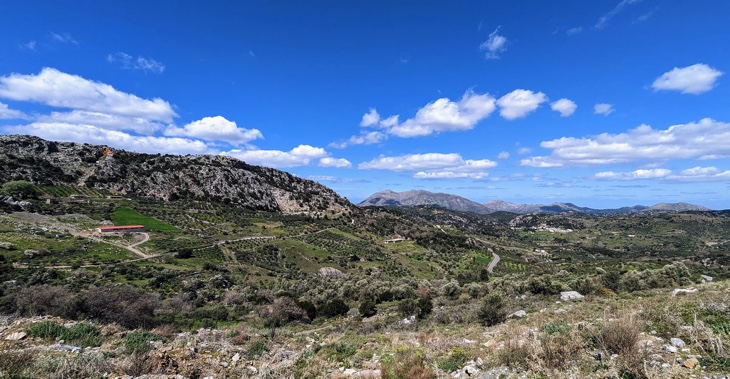
The seasons of spring, summer, autumn and winter are characteristic of the Mediterranean region. Warm weather, blossoming flowers and verdant landscapes are all features of spring, which lasts from March through May. The warmest season is summer, from June to August, distinguished by extended bright days and comfortable nights. It is a wonderful time to go throughout the autumn, from September to November, when temperatures are cooler and there is sporadic rainfall. The coolest season is winter, from December to February, with moderate temperatures and sporadic wet days.
When is the Best Time to Visit Anogia Village Crete?
The autumn and spring are the best times to visit Anogia Village, Crete. April to June and September to October have moderate temperatures and agreeable weather, making them ideal for exploring the village and its surrounding natural splendour. The environment comes to life in the spring with vivid hues, blossoming flowers and a cool atmosphere. The weather is warmer in the autumn, ideal for walking around Anogia’s charming streets .
Anogia Village or Anogia Kreta, is renowned for its extensive cultural legacy and old-fashioned celebrations. The “Panigyri of Saint John” is one of the most well-known celebrations in Anogia and it takes place every year on August 28 and 29. The community comes alive with music, dancing, local cuisine and traditional festivities during the festival. Visitors fully immerse themselves in the energetic environment and discover the authentic Cretan culture. Attending the event provides a unique chance to experience regional customs and the friendliness and hospitality of the Anogia community. Plan the vacation appropriately to maximise the stay in Anogia Village and take advantage of the Best Time to Visit Crete.
Can you Park a Car Anywhere in Anogia Village?
No, you cannot park a car anywhere in Anogia Village. A tiny, charming town, Anogia has few parking spots and winding streets. Unrestricted parking is not permitted due to the infrastructure of the hamlet. Randomly parking on the small streets makes it hard for people to get around, both locals and people who are just visiting. Abide by local laws and only park in approved places or when signs indicate parking availability. Ensure everyone’s experience is easier by following these rules and contributing to keeping Anogia Village attractive and functioning.
Is Anogia Village a Safe Place in Crete?
Yes, Anogia Village in Crete is usually regarded as a safe place. It is always advised to use common sense and follow basic safety measures, just like when visiting any other place. The people of Anogia are well recognised for their kind dispositions and generous hospitality. It is a tiny and close-knit town. A village is a popular option for tourists seeking a genuine Cretan experience since it maintains a serene ambience. Keep the valuables hidden and be mindful of the surroundings to protect the possessions against theft. Have a secure and pleasurable visit to Anogia Village by exercising caution and respect.
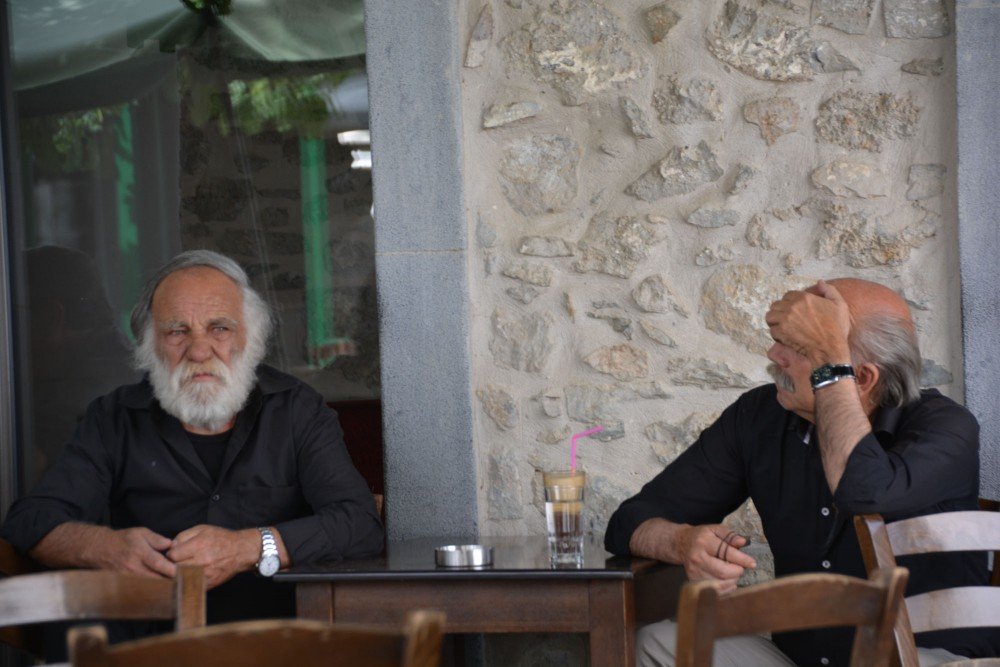
Published on August 10, 2023














